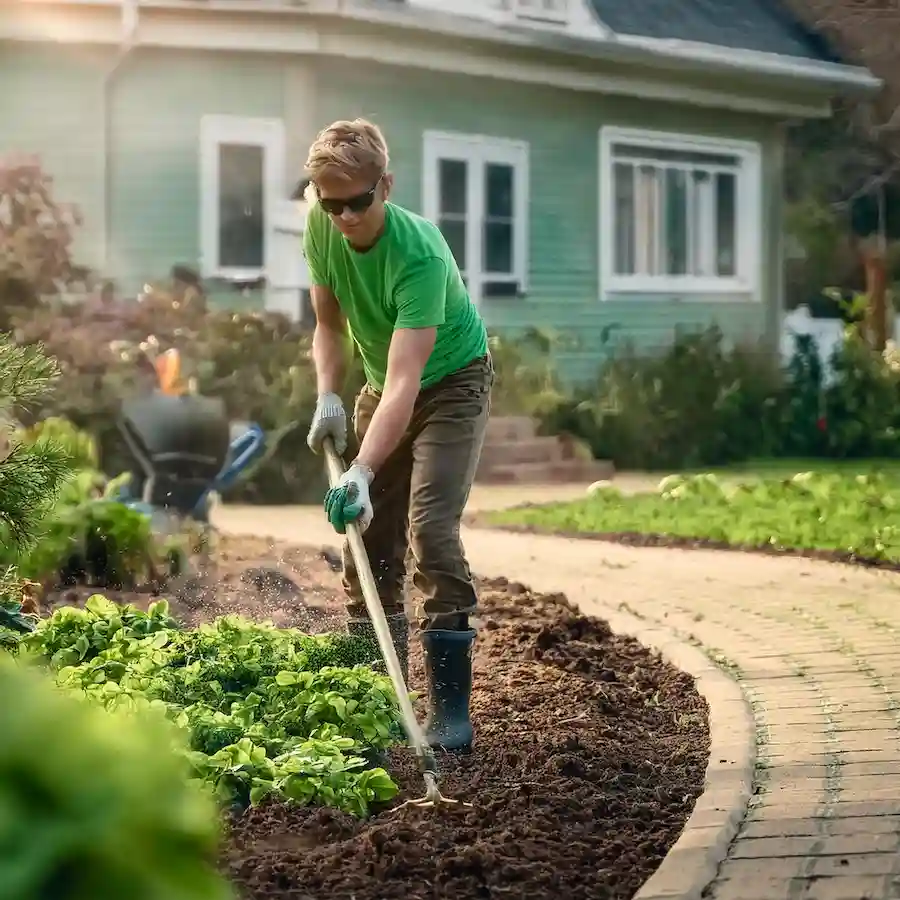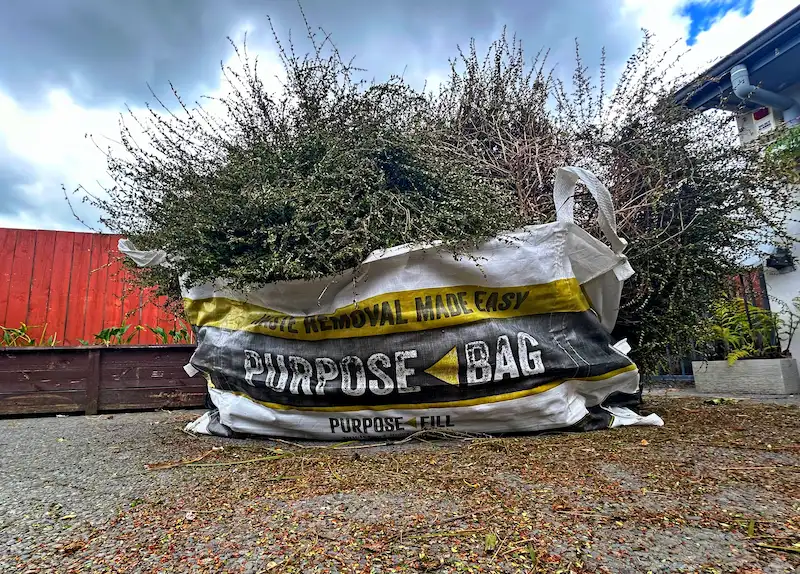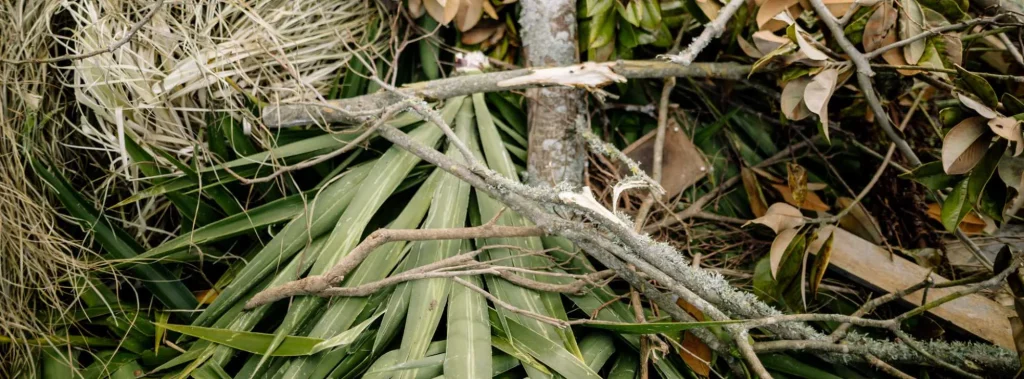Get rid of your garden waste quickly with a flexible skip Purpose Bag
Is your yard starting to resemble a jungle? With overgrown plants, tangled vines, and piles of leaves, it can feel like you’ve stepped into an untamed wilderness.
The once-pristine landscape you envisioned has become a chaotic collection of garden debris. Whether it’s the relentless growth of weeds or the aftermath of your last landscaping project, managing garden waste can feel overwhelming.
Did you know that garden waste can not only clutter your outdoor space but also attract pests? Well you dont want that .
Lets sort it out !
Step 1: Gather Your Tools
Before diving into the sorting process, it’s essential to gather the right tools to make your job easier. Here’s what you’ll need:

- Flexible waste bags: These are ideal for collecting various types of waste. They’re lightweight and easy to handle.
- Gardening gloves: Protect your hands while working with potentially prickly or dirty materials.
- Rake or shovel: These tools will help you gather and move waste efficiently.
- Tarpaulin or large container: For temporarily holding waste before bagging.
Prepare a designated area in your yard for sorting. This will keep your workspace organized and make the process more manageable.
1. Green Waste
Definition
Green waste refers to biodegradable materials that can decompose naturally. These materials are rich in nitrogen, making them ideal for composting and enriching soil. Properly managing green waste not only reduces landfill contributions but also enhances garden health.
Common Types of Green Waste
Grass Clippings
- Generated from regular lawn mowing, grass clippings are abundant and often considered a nuisance if left on the lawn.
- Benefits: They are a rich source of nitrogen, promoting rapid decomposition in compost piles. When mixed with carbon-rich materials, they help create a balanced compost that enriches garden soil.
Leaves
- Fallen leaves from various trees, such as oaks, maples, and birches, can accumulate in your yard during autumn.
- Benefits: Leaves can be composted directly, providing essential nutrients as they break down. Shredding leaves before composting accelerates the decomposition process, making them a quick addition to compost.
Branches and Twigs
- Small branches and twigs from shrubs like hydrangeas or perennial plants are common in garden waste.
- Benefits: While larger branches may require different disposal methods, small twigs can be composted or chipped into mulch. This helps improve air circulation in compost piles and adds structure to the compost.
Plant Trimmings
- This category includes cuttings from flowering plants, such as roses, and perennials like daylilies.
- Benefits: These soft materials decompose quickly, enriching compost with organic matter. Trimmings can also include spent flowers and deadhead cuttings, which contribute to nutrient content.
By focusing on these components of green waste, you can enhance your composting efforts and contribute positively to your garden’s ecosystem. Proper sorting and management of green waste not only improve soil health but also promote sustainability in your gardening practices.
A side note you can obviously indispose of other types of waste if you intend to use Purpose Fill’ fleixble skip bag – Purpose Bag
- Household Waste: Items in this category may include metal scraps, paper products, and unwanted toys. It’s essential to separate these items from organic materials to ensure proper recycling.
- Commercial/Demolition Waste: If you’ve recently renovated or done any landscaping, you might have timber, metal scraps, or carpet remnants. These should be collected separately due to their different disposal requirements.
- Clean Waste: This includes items like concrete, bricks, and clean floor tiles. These materials can often be recycled but should not be mixed with organic waste.

Green Waste Management
Effectively managing green waste is vital for creating a healthy garden and promoting sustainable practices. One of the key aspects of managing green waste is the separation of grass clippings and leaves. By creating distinct piles for each type, you can optimize the composting process significantly.
Separate Grass Clippings and Leaves
Grass clippings are generated during regular lawn mowing and are often abundant. These clippings are rich in nitrogen, which is crucial for composting. When combined with carbon-rich materials, they help create a balanced compost that enriches the soil. However, clippings decompose much faster than leaves, which are high in carbon and can take longer to break down.
By keeping grass clippings and leaves in separate piles, you can manage their decomposition rates effectively. Grass clippings will break down quickly, providing nutrients to the compost sooner. On the other hand, leaves can be composted directly or shredded to speed up their decomposition. Shredding leaves increases their surface area, allowing microbial activity to break them down more efficiently. This separation ensures that your compost maintains an optimal carbon-to-nitrogen ratio, which is essential for effective composting.
Trim Branches and Twigs
Another important step in managing green waste is the trimming of branches and twigs. Small branches and twigs from shrubs and perennials often accumulate during gardening activities. While larger branches may require different disposal methods, smaller pieces can be composted or chipped into mulch.
Cutting branches and twigs into smaller pieces facilitates easier handling and accelerates the decomposition process. Smaller pieces break down more quickly in compost, making them more effective for enriching the soil. This not only helps reduce the volume of waste but also contributes valuable organic matter to your compost pile.
Step 4: Bagging It Up
Once you have sorted your waste, it’s time to bag it. Here’s how to do it effectively:
- Choose the right bag: For large amounts of green waste, a sturdy flexible waste bag is ideal. These bags are designed to hold significant weight and can withstand the moisture from organic materials.
Purpose Bag is designed to handle heavy loads of up to 750kg, with a generous capacity of 3 cubic meters (2m x 1.5m x 1m). With a simple unfold-and-fill design, the Purpose Bag – It’s incredibly easy to use—just unfold and fill!
Could save up to 40% compared to traditional skip bins, and move it anywhere you need —even inside your garage or right at the mess in the back of the yard .
And enjoy flexible time frames with no pressure to rush ( unlike skip bins ) - Fill the bag carefully: Start with green waste, as it’s biodegradable. As you fill the bag, ensure that you don’t overstuff it; leaving some space will make it easier to handle later.
Layering Your Green Waste - When filling your waste bag, start by considering the weight and size of the materials.
- Heavier Items First: Begin by placing heavier items at the bottom, such as small branches, twigs, and larger plant trimmings. This creates a solid base that provides stability to the bag and prevents lighter materials from getting crushed.
- Adding Grass Clippings: Next, layer in grass clippings. These nitrogen-rich components break down quickly and add valuable nutrients to the compost. Position them on top of the heavier materials; their moisture content helps soften the denser materials below, promoting faster decomposition. Avoid packing them too tightly to ensure airflow.
- Incorporating Leaves: After the grass clippings, add leaves. Whether whole or shredded, leaves are high in carbon and balance the nitrogen-rich materials beneath. Shredded leaves decompose more quickly, enhancing compost efficiency. Distribute them evenly to prevent clumping.
- Final Touches with Soft Plant Trimmings: Once you’ve layered the heavier materials, grass clippings, and leaves, add soft plant trimmings on top. This includes cuttings from flowering plants or soft-stemmed perennials. These lighter materials decompose quickly and benefit from the moisture and nutrients from the layers below
- Seal the bag securely: Once the bag is filled, make sure it not overloaded. And there is no chance of spillage and keeps the contents contained during transportation.
Step 5: Disposal
With your waste sorted and bagged, the next step is disposal:
- Schedule a pick-up: Reach out to Purpose Fill to arrange collection of your Purpose Bag. We handle all types of skip bags, including those from other companies, ensuring that your waste is disposed of responsibly and efficiently.
- Transport if necessary: If you prefer to take the waste to a designated disposal site yourself, make sure your vehicle can accommodate the bags. However, many find that using a collection service is more convenient.

Where to get the flexible purpose bag skip bag ?
Purpose Fill makes getting your garage clear out project quick and easy:
- Order here: grab your Purpose Bag plus collection combo, here !
- Now relax and wait for delivery: Your Purpose Bag is coming your way! It should arrive within 1-3 days. Need it faster? We’re happy to arrange express delivery for you.
- Bag it up: Go hard – get rid of everything! Take your time and fill it up (just be mindful of the weight limit).
- Let us know – we’ll collect: When you’re ready to get rid of that waste, fill out this form or call us and out awesome team will collect it within 7 days.
A flexible skip bag is best way to get a good, thorough cleanout without the hassle and cost of renting a skip.
Purpose Fill: Your Top-Rated Waikato Team
We’re the best darn team in the Waikato ( 605+ google reviews ) and we’re always happy to help you out. So, if you have any questions, just give us a call at 0800 50 10 20 or shoot us an email. We’re here for you!
